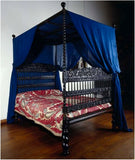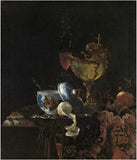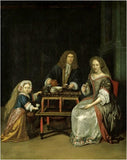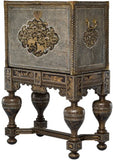Enriching your house with unique and exotic decorations is nothing new. Hunderds of years before you decided to adorn your living room with an Japanese laquer table or a stone Buddha head, people were already enthusiastically ordering and importing Asian objects to show of to their friends.
The excitement Europe already had for Asia 400 years ago is perfectly captured in the exhibition "Asia>Amsterdam" at the Rijksmuseum in Amsterdam. It showcases some of the most beautiful and interesting objects amassed in high and middle class European interiors where they made a lasting impact.
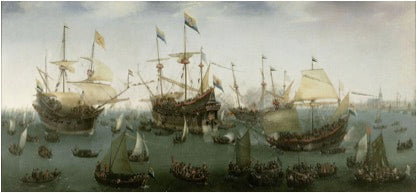
The Dutch East India Company was responsible for one of the most interesting eras in history of linking Europe with Asia. Established in 1602 the VOC dominated the Asia trade in Europe for almost two hundred years.
The company was most successful and popular by bringing back highly coveted spices and other goods to Europe from their headquarters in far flung Batavia. Not only were the European tastebuds and noses captured by the exotic spices, but their imagination was hijacked the moment they came in contact with other Asian treasures.
How curious! This Chinese silk so soft and light it could be see-through. And this Indian cotton was decorated with the most beautiful colours that did not fade. Unbelievable how smooth the dark Japanese laquer was and how light and strong the Chinese porcelain.
The chest is decorated with the maki-e technique; gold powder spread over wet laquer in different shades and high detail. European artists struggled to replicate this technique which caused a highly desirable finish.


In the 17th century Japanese silk skirts or 'house-coats' became highly popular. It is clear these loose fitting coats were made for Westeners as the sleeves are seperately attached to the coat. True kimonos were made of one piece of silk.
In no time, these objects became highly desirable to display in one's home. Interior design changed radically with additions of laquer cabinets, porcelain cabinets, Indian textiles as wallhangings and bedcovers, and Asian inspired furniture. Soon, the shimmering quality, texture and luxury of the objects were captured in numerous stillifes and portraits. And, of course, the Europeans started to commision Asian objects with designs adapted to their own taste and fashion.
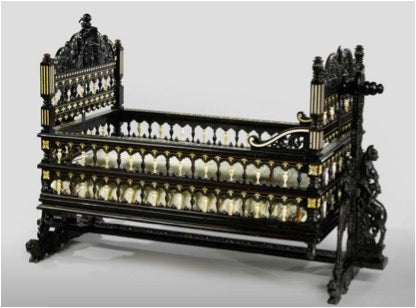
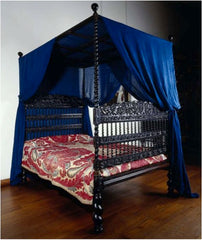
Painters became fascinated by porcelain, its texture, lightness and see through quality.
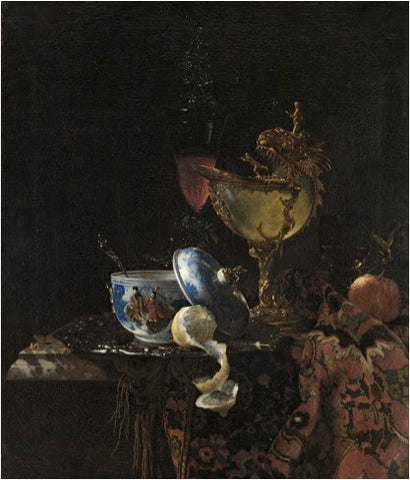
We see a family proudly drinking tea from their Javanese laquer table with mismatched porcelain and earthenware tea set. A matching set was not popular yet. The table is noticably hightend as the European chairs were much higher than Asian furniture. We can also see this in cabinets and chests as these have almost always been placed on stands:
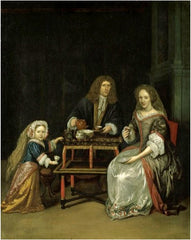
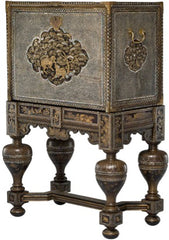
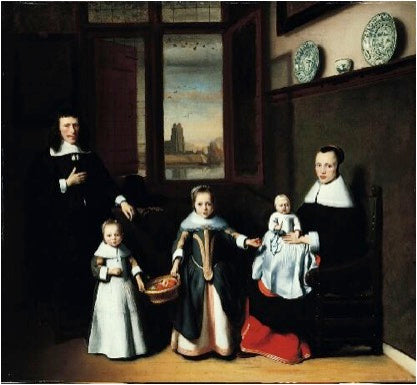
In this painting we see that the family has proudly displayed their collection of Chinese porcelain in their interior. More and more the interior was adapted to display growing collections of porcelain and laquerwork, sometimes complete rooms were dedicated to these collections.
The exhibition is worth seeing for everyone interested in the influence of the Asia trade on the European minds and the enrichment it brought in interior design. Over 170 objects from multiple collections around the world are on display and the story they tell is one of exotic luxury of the Dutch 17th century. Definity worth seeing this winter!
- November 20, 2015
- Margret Ressang


